Abdul Qadir Al Rassam, (1882 - 1952)
VIEW OF THE TIGRIS, c. 1934
Oil on canvas
13.78 X 20.87 in (35 X 53 cm)
Barjeel Art Foundation, Sharjah
Abdul Qadir Al Rassam, (1882 - 1952), was born in Baghdad, Iraq. He was the first well-known painter in modern Iraq and the leader of realism school in Iraq. He studied military science and art at the Military College, Istanbul, Turkey, (then the capital of the Ottoman Empire) from 1904. He studied art and painting in the European traditional style and became a landscape painter, he painted many landscapes of Iraq in the realism style, using shading and composition to suggest time periods. He was a major figure among the first generation of modern Iraqi artists and was a member of the Art Friends Society (AFS, Jami’yat Asdiqa’ al-Fen). A collection of his work is hung in The Pioneers Museum, Baghdad. A prolific painter of oils, the majority of his works are now in private hands. More on Abdul Qadir Al Rassam
Jewad Selim (Iraq, 1919-1961)
Figure of a Girl, c. 1948
Plaster
H 85 x W 19 x D 21 CM
Ibrahimi Collection, Amman, Jordan
The present work was sculpted whilst Selim was studying in London on a government scholarship; he started at the Chelsea School of Art in January 1946, but moved to the Slade School of Fine Art in September of that same year, where he met his future wife and fellow art student, Lorna (see below), whom he married in 1950.
Jewad Selim (1919 – 1961) was an Iraqi sculptor born in Ankara (Turkey) in 1919. He studied sculpture in Paris (1938-1939), Rome (1939-1940) and London (1946-1949). After he returned to Iraq, he was appointed head of the Sculpture Dept. at the Institute of Fine Arts in Baghdad, a position he retained until his death in 1961. He founded the Group of Baghdad for Modern Art, as well as the new Baghdad School of Modern Art. He is especially known for his Liberty Monument, located in one of Baghdad's main squares. In this monument, the artist celebrated the Iraqi people and the 1958 Revolution. He was a founding member of the Iraqi Artists Society. More on Jewad Selim
Lorna Selim (Iraq, born 1928)
Baghdad Alley, c. 1987-2008
Oil on hardboard
40 x 40cm (15 3/4 x 15 3/4in)
Private collection
Sold for £2,500 in October 2015
Lorna Selim received a scholarship to study at the Slade School of Fine Arts, London, where she received a diploma in painting and design in 1948. The following year she received an Art Teachers' Diploma (ATD) from the London University Institute of Education. From 1949–50 she taught art at the Tapton House Grammar School, Chesterfield, England. In the UK, she met Jewad Selim and they married in 1950. Returning to Baghdad, Lorna Selim became a member of the Baghdad Modern Art Group, Art Friends Society, and Society of Iraqi Plastic Artists. During the 1950s, she exhibited her work with the Baghdad Modern Art Group and the Pioneers Group. She was an art teacher at Ta'ssisiya School, Baghdad, in 1951, and participated in the Iraqi Pavilion Design for the International Fair held in Damascus in 1954. Along with Mohamed Ghani Hikmet, she supervised the completion of Jewad Selim's Monument of Freedom after his sudden death in 1961.
She taught drawing and painting at the Girls College in 1961, and the architecture department of the Engineering College, Baghdad University, in 1965. She lives and works in Abergavenny, Wales. Her work is held in collections including Mathaf: Arab Museum of Modern Art, Doha.
More on Lorna Selim

Najib Yunes (Iraq, 1930-2007)
Untitled, c. 1981
Oil on canvas
43 x 60cm (16 15/16 x 23 5/8in)
Private collection
Sold for £6,250 in October 2015
Younis Najib was born in Mosul, Iraq in 1930. He received his Degree of Honor from the College of Fine Arts in Cairo in 1954 and has participated in many exhibitions both in Iraq and abroad.
In addition to his own work, Najib has been organizing art study courses since 1954, which have helped to produce many famous Iraqi artists. In 1965, he founded Mosul's University Studio, which served as the base for the university museum and contained various works of Iraqi art. He also established the Painting and Ceramic as well as Arabic Calligraphy and Arabesque sections in the Fine Art Institute of Mosul in 1978, where he served as the head until his retirement in 1983. Najib's work has largely focused on his surroundings and on depicting “the object” in great detail. He has also created many paintings that reflect historical and emotional subjects. In 1996, he was recognized with the Medal of Iraqi Art Pioneers by the Ministry of Education and has been a member of the Iraqi Artists Union and a founding member of the Iraqi Plastic Art Union. More on Younis Najib
Bahjat Abbosh (Iraq)
The Bathhouse, c. 1968
Oil on board
47 x 66cm (18 1/2 x 26in)
Private collection
Sold for £6,250 in October 2015
I have no information on Bahjat Abbosh
Faeq Hassan (Iraq, 1914-1992)
The Goldsmith, c. 1980
Oil on canvas
73 x 78cm (28 3/4 x 30 11/16in)
Private collection
Faeq Hassan (Iraq, 1914-1992) was an Iraqi painter, born in Baghdad. He graduated from the École des Beaux-Arts, Paris in 1938. He founded the Painting Department at the Fine Arts Institute in 1939-1940. Founded the Pioneers Group (or S.P) in 1950. He participated in its exhibitions until 1967 when he joined in founding the Corner Group and participated in its first exhibition. Took part in the Friends of Art Society in 1943 and 1946. Participated in the Avicenna Exhibition in Baghdad in 1952. Organized a number of one - man exhibitions in Baghdad, in 1962-1967 and 1971. Participated in most national exhibitions outside Iraq. Joined nine artists in the Iraq Art Exhibition in Beirut in 1965. Member of the Iraqi Artists Society. More on Faeq Hassan
Akram Shukri (Iraq, 1910-1986)
Abstract Composition, c. 1956
Oil on canvas framed
67 x 59cm (26 3/8 x 23 1/4in).
Private collection
Akram Shukri is considered one of the most important artists in the development of the Iraqi modern art movement, and although primarily an architect he was the founding member of the Society of Artists and Art Lovers in 1941. This group included important Iraqi artists such as Jawad Selim, Hafiz Droubi and Faik Hassan. Numerous members of this society went on to found other important artist groups; Faik Hassan was the leader of La Societe Primitive which later became known as The Pioneers, and Hafiz Droubi formed a group known as The Baghdad Group of Modern Art.
More on Akram Shukri
Shakir Hassan Al-Said (Iraqi, born 1925)
Harun Al Rashid, c. 1950
Oil on wood
75 x 50cm (29 1/2 x 19 11/16in)
Private collection
Harun al-Rashid became the fifth Caliph of the Abbasid dynasty in 786, and went on to become its most famous and celebrated leader. A number of the stories in The Thousand and One Nights are based on Harun and his magnificent court at Baghdad.
Harun's empire extended from modern Morocco to India. His 23-year reign involved a number of military campaigns, but was generally peaceful, allowing for the expansion of trade and industry. The caliphate's capital was Baghdad, and under Harun's reign it became the most magnificent and advanced city in the Islamic world. A center of the arts and learning, Baghdad was also a city of dazzling wealth and luxury.
More on Harun al-Rashid
Shakir Hassan Al Said (1925–2004), an Iraqi painter, sculptor and writer, is considered one of Iraq's most innovative and influential artists.
Born in Samawa, Al Said lived, worked and died in Bagdad. In 1948 he received a degree in social science from the Higher Institute of Teachers in Baghdad and in 1954 a diploma in painting from the Institute of Fine Arts in Baghdad. He continued his studies at the École nationale supérieure des Beaux-Arts in Paris until 1959. During his stay in Paris, he discovered Western modern art in galleries and Sumerian art at the Louvre. He returned to Baghdad in 1959.
He co-founded in 1951 with Jawad Saleem Jama'et Baghdad lil Fann al-Hadith (Baghdad Modern Art Group), one of the most unusual arts movements in the Middle East in the post–World War II, itwas called Istilham al-turath (Seeking inspiration from tradition), considered as "the basic point of departure, to achieve through modern styles, a cultural vision". He headed the group after the death of Saleem in 1961.
In 1971, he founded Al Bu'd al Wahad (the One-dimension Group)", which promoted the modern calligraphic school in Arab art.
His work is collected by major museums, such as Mathaf: Arab Museum of Modern Art in Doha, the Guggenheim in New York, and Sharjah Art Museum.
More on Shakir Hassan Al Said
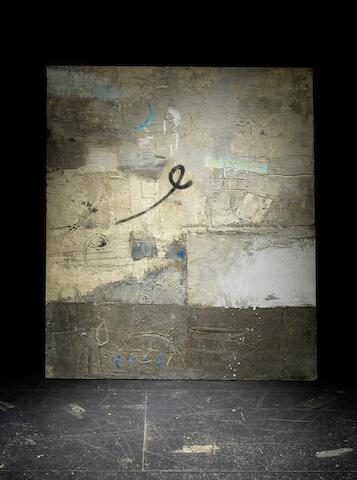
Shakir Hassan Al Said (Iraq, 1925-2004)
Al-Muntassirun (The Victorious), c. 1983
Mixed media on wooden panel
122 x 101cm (48 1/16 x 39 3/4in).
Private collection
Produced during the nadir of the Iran-Iraq war, a bloody conflict which saw the futile loss of nearly a million lives on both sides, Shakir Hassan's cynical title "The Victorious" is a subtle jibe at the hollow political narratives which spur human conflict.
Shakir Hassan Al Said (1925–2004), an Iraqi painter, sculptor and writer, is considered one of Iraq's most innovative and influential artists. An artist, philosopher, art critic and art historian, he was actively involved in the formation of two important art groups that influenced the direction of post-colonial art in Iraq. He, and the art groups in which he was involved, shaped the modern Iraqi art movement and bridged the gap between modernity and heritage. His theories charted a new Arabic art aesthetic which allowed for valuations of regional art through lenses that were uniquely Arabic rather than Western. More on Shakir Hassan Al Said
Qassim Naji (Iraq, 1910-1985)
Beneath the Rising Sun (14th July Revolution 1958), c. 1958
Oil on canvas, framed
186 x 120cm (73 1/4 x 47 1/4in).
Private collection
The present work is a striking, monumental and extremely rare example of twentieth century Iraqi political art. Celebrating the victory of Abd al-Karim Qasim in overthrowing the Iraqi monarchy during the 14th July Revolution, the painting depicts a heroic Pan-Arabic, resistance against the darkness of despotism and the imposing serpents of pernicious imperialist powers.
On a wider scale, Naji's depiction speaks of the growing phenomenon of Pan-Arabism taking form after the advent of Gamal Abdel Nasser in Egypt; the notion that the divisive and destructive era of Ottoman and Colonial rule could be vanquished by Arab unity was a particularly attractive proposition for aspiring politicians seeking to bind populations that were divided by ethnic sectarian and national lines. More on this painting
Hafiz Drubi (Iraq, 1914-1991)
The Dancer
Oil on canvas
80 x 60cm (31 1/2 x 23 5/8in)
Private collection
Hafidh al-Droubi (1914 - 1991) is primarily remembered for his work as an educator and developer of art pedagogy in Iraq during the mid-twentieth century. Yet he was also an active painter who possessed a talent for capturing the beauty of everyday life through a sophisticated manipulation of form and color. Al-Droubi is considered one of the pioneers of Iraqi modern art as he made several early contributions to its development.
Al-Droubi began his formal education in the arts at the Accademia Reale in Rome, becoming one of the first Iraqi artists to study abroad. He would later earn a degree from Goldsmiths College in London in 1950. After his studies in Rome, he returned to Iraq and became an active participant in the burgeoning art scene. During the formative years between studying in Rome and London, Al-Droubi took several steps to professionalize art practice in Iraq. In 1941, he established Iraq's first free artist studio, which gave aspiring artists a space to learn and practice art-making. In the subsequent decade, Al-Droubi opened similar artist studios at the Faculty of Arts and Sciences at Baghdad University, where he could supervise and encourage emerging talent. Many other studios like these opened around Baghdad, each headed by established artist. This system proved highly effective as many notable Iraqi artists received their early training from these ateliers.
Al-Droubi was also a founding member of the Society of the Friends of Art, whose membership included Jewad Selim, Faiq Hassan, and Abdul Qadir al-Rassam. In 1953, al-Droubi founded the Impressionist Group as an extension of his work as an art educator. The group largely followed al-Droubi's pedagogical agendas and consisted of his students and colleagues, including Dia Azzawi.
Al-Droubi is most commonly known for his cubist works. However, the extent to which he adhered to the Cubist paradigm as it was practiced in Europe is open to debate. With that said, his work does exhibit an aesthetic reference arising from the cubist tendency to fragment space and shift perspective. However, his variant use of this fragmentation and his insistence on maintaining naturalistic forms is quite unique to his practice. More on Hafidh al-Droubi
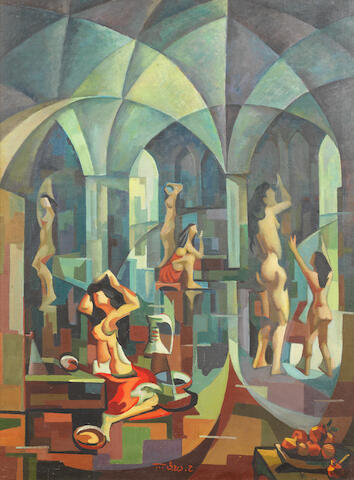
Hafiz Drubi (Iraq, 1914-1991)
Cubist Bathhouse, c. 1960
Oil on wood
100 x 75cm (39 3/8 x 29 1/2in)
Private collection
Hafidh Al Droubi (1914-1991) was an Iraqi painter and draughtsman, noted for his Cubist paintings and for his approach to professionalising Iraqi art education in the early to mid 20th-century. He was a prolific painter, an important artist in the Pioneer generation, a key figure in the development of modernism in Iraq and a key figure in the development of early Iraqi art education. More on Hafidh Al Droubi
Widad Al Orfali (Iraq, born 1929 )
City-Scape
Mixed media on paper
49 x 105cm (19 5/16 x 41 5/16in)
Private collection
Widad Al Orfali; Born in 1929, Orfali studied at the Baghdad Institute of Fine Arts, Widad honed her talent under pioneer Iraqi artist Khalid Al Jadir.
A visit to Andalusia in Spain was a major turning point in Widad's artistic life. Deeply fascinated by the detailed and decorative manifestations of ancient Andalusian culture, she could not resist changing from realism art to a new world of 'Expression' and her work became an unusual, glorious celebration of her own oriental "Dream Cities". They were her 'Fantasia' that portrayed the beauty of domes, arches, decorations and colours; the timeless spirit of Andalusia entwined with her love for beloved Iraq, subsequently rhythms of Arabia is born. More on Widad Al Orfali
Paul Guiragossian (Lebanon, 1927-1993)
Untitled (The Mother), c. 1960
Oil on canvas
118 x 89cm (46 7/16 x 35 1/16in)
Private collection
In the suffering of the mother, Guiragossian points to the duality of her plight in bearing the emotional burden of her families hardship as well as that of her own, the suffering of others is therefore realized through the anguish of the mother for her children, and she as a medium both amplifies and intensifies this suffering. This also highlights the morbid irony of societies which hurt those who are life givers, thus alienating them from their life-giving qualities. More on this painting
Paul Guiragossian (1926 – November 20, 1993) was an Armenian Lebanese painter. Born to Armenian parents, Paul Guiragossian experienced the consequences of exile from a very tender age. Raised in boarding schools, he grew up away from his mother who had to work to make sure her two sons got an education.
In the 1950s, Guiragossian started teaching art in several Armenian schools and worked as an illustrator. He later started his own business with his brother Antoine, painting cinema banners, posters and drawing illustrations for books. Soon after he was discovered for his art and introduced to his contemporaries after which he began exhibiting his works in Beirut and eventually all over the world.
In 1956, Guiragossian won the first prize in a painting competition, which landed him a scholarship by the Italian government to study at The Academy of Fine Arts of Florence.
In 1962, Guiragossian was granted another scholarship, this time by the French Government, to study and paint in Paris at Les Atelier Des Maîtres De L'Ecole De Paris.
By the mid 1960s Guiragossian had grown to become one of the most celebrated artists in Lebanon and eventually of the Arab world and even though war broke out in the early 1970s, his attachment to Lebanon grew bigger and his works became more colorful with messages of hope for his people.
In 1989, Guiragossian went to Paris to exhibit his works in La Salle Des Pas Perdus in UNESCO and lived in the city with part of his family until 1991. In that year, he had a solo exhibition at the Institut du Monde Arabe. This exhibition was extended and marked the first solo show at the IMA for any artist.
More on Guiragossian
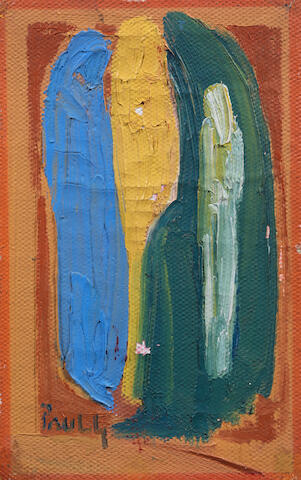
Paul Guiragossian (Lebanon, 1927-1993)
Three Figures
Oil on canvas
22 x 14cm (8 11/16 x 5 1/2in)
Private collection
Mahmoud Hammad (Syrian, 1923-1988)
Cain and Abel, c. 1958
Oil on canvas, framed
74 x 74cm (29 1/8 x 29 1/8in)
Private collection
In Persian mythology, the rival brothers are the gods Ahriman and Ahura Mazda. Islamic tradition calls them Kabil (Cain) and Habil (Abel). More on this painting
Mahmoud Hammad (Syrian, 1923-1988) was a pioneer of modern Syrian art, he studied art in Accademia di belle arti di Roma during 1953–1957 in the art of engraving and especially the art medal manufacturing.
After completing his studies he returned to Damascus in 1960 and taught as professor at the Fine Arts Faculty of Damascus since its creation. From 1970 until 1980, he became dean at the Fine Arts Faculty of Damascus.
In 1939 he started exhibiting in most Arab countries, in Europe and in USA. In 1948, first prize in Arts in Damascus Exhibition. In 1957, first prize at the competition of the city of Naples. In 1959, first prize at the competition of Ministry of Culture in United Arab Republic. More on Mahmoud Hammad
Fouad Kamel (Egypt, 1919-1999)
Trajectoire du rêve, c. 1944
Oil on wood
121 x 81cm (47 5/8 x 31 7/8in)
Private collection
Between death and everlasting life there is a fierce battle producing a most dreadful mutilation which I encounter in my paintings. Indeed into the depths of everything a spirit is creeping, even into the inanimate – Fouad Kamel. More on this painting
The Egyptian Surrealist movement, "Art E Liberte", was founded by George Henein with a group of Egyptian and expatriate avant-garde artists in protest against Fascist and Nazist anti-art sentiment. They called their art 'decadent', in support of the poet Andre Breton, and his statement, signed by Mexican artist Diego Rivera, Towards an Independent Art.
A number of Egyptian artists, including Fouad Kamel, Rameses Younan and Kamel el-Telmesany, in addition to a great number of Egyptian and expatriate intellectuals, signed a statement prepared by poet George Henein, entitled "Long Live Decadent Art!" It was published in Al-Fann Al-Hurr (Free Art) magazine in December 1938.
The presence of many foreign artists, poets, writers and critics in Egypt at the time played a crucial role in spreading an air of liberation and the dissemination of Socialist thought; George Henein, with his refined French education, was the link between these Egyptianized expatriates and the artists of Egypt.
Born in 1919, Fouad Kamel was primarily influenced by the 1930s growing up. Globally this period can be best characterised by the clash between the world’s foremost political philosophies - Marxist Socialism, Capitalist Democracy, and the Totalitarianism of both Communism and Fascism. n Europe, Surrealism continued to be the dominant artistic trend; a kind of expression and school of thought that by this time had spread worldwide. In Mexico, artists like Frida Kahlo and Diego Rivera integrated many of these ideas into their radical political ideologies to develop a innovative kind of magic realism. More on Fouad Kamel
Fouad Kamel (Egyptian, 1919-1973)
Composition
Oil on canvas
31 3/8 x 23¼in. (80 x 59cm.)
Private collection
Fouad Kamel (Egyptian, 1919-1973)
Untitled, c. 1959
Oil on canvas
31¼ x 21 5/8in. (79.5 x 55cm.)
Private collection
Fouad Kamel (Egypt, 1919-1999)
Abstract Composition, c. 1967
oil on board, framed
40 x 50cm (15 3/4 x 19 11/16in).
Private collection
Mahmoud Said (Egypt, 1897-1964)
View of Aswan
Oil on paper
10 x 17cm (3 15/16 x 6 11/16in)
Private collection
Mahmoud Said, 1897-1964, EGYPTIAN. Born into a wealthy Alexandrian family, Mahmoud Said first studied jurisprudence at the French School of Law in Cairo in the 1910s. During his studies, he became interested in painting, and joined the studios of Italian painters Amelia Casonato da Forno and Arturo Zanieri, before travelling to France to study in Paris, briefly at the Académie Julian. Though he worked for almost thirty years as a lawyer and then a judge, he continued to paint in his free time until he quit law in the late 1940s and devoted himself to art completely. He is considered the foremost painter of the ‘Pioneer’ generation of Egyptian artists, renowned for his bold, richly coloured portraits, nudes, and landscapes. He painted continuously until his death in 1964.
Said’s works are housed in private and public collections including Mathaf: Arab Museum of Modern Art, Doha; Museum of Modern Egyptian Art, Cairo; Mahmoud Said Museum, Alexandria, and Ministry of Culture, Egypt.
More on Mahmoud Said
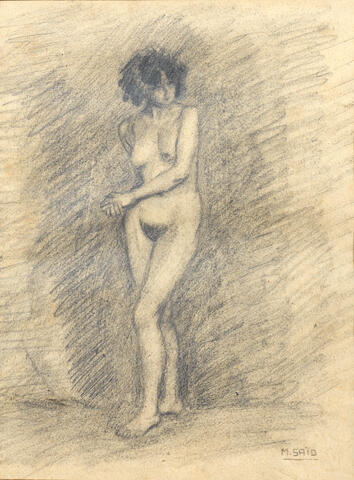
Mahmoud Said (Egypt, 1897-1964)
Nude Figure
Pencil on paper, framed
26 x 19cm (10 1/4 x 7 1/2in).
Private collection
Mahmoud Moussa in formation Above
Mahmoud Said (Egypt, 1897-1964)
Self Portrait
Pencil on paper, framed
16 x 10cm (6 5/16 x 3 15/16in)
Private collection
Mahmoud Moussa information below
Manoucher Yektai (Iran, born 1922)
Portrait of Iris Clert. c. 1960
Oil on canvas
195 x 250cm (76 3/4 x 98 7/16in)
Depicting the colourful and exuberant Parisian gallerist Iris Clert, the painting was first exhibited in 1961 in Paris alongside works by Lucio Fontana, Robert Rauschenberg, Yves Klein and Arman all of whom showcased their esoteric portraits of the famous gallery owner.
Manoucher Yektai (Iran, born 1922). Born in Tehran, Yektai is considered one of the unsung founders of the New York School of Abstract Expressionism. Between 1945 and 1947, he studied with Amédée Ozenfant in Paris, France, and later in New York City.
In 1951 and 1952 Leo Castelli brought some friends, including early Abstract-Expressionist painters, to see Yektai's New York exhibitions shows . Castelli introduced him to the 8th Street Club in 1951 and he soon became a friend of Rothko,Tobey, Guston, and others. In the mid-1950S he was included in classic group exhibitions of early Abstract-Expressionism at the Stable Gallery and elsewhere, with older generationl artists such as DeKooning, Pollock, Newman, and Kline. From 1957 till 1965 he showed at Poindexter.With this background it would be easy to regard Yektai as a member - almost a founding member - of the New York School. More on Manoucher Yektai
Ardeshir Mohasses (Iran, 1938-2008)
The Arbiter of All Justice, c. 1996
Ink on paper
58 x 76cm (22 13/16 x 29 15/16in)
Private collection
Ardeshir Mohasses (9 September 1938 in Rasht - died 9 October 2008 in New York). Ardeshir Mohassess was born on Sept. 9, 1938, in Rasht, in northwest Iran. His mother was a poet and headmistress of the first school for women in Rasht; his father was a judge, and his maternal grandmother painted at home. At 3, he began drawing characters from his mother’s bedtime stories. He published his first cartoon in 1951, The Iran Bulletin (now named Iran Bulletin — Middle East Forum) reported.
Mr. Mohassess earned degrees in both political science and law from the University of Tehran, then worked as a librarian in the library of Iran’s housing ministry. He told The Bulletin he quit because he had read most of the books in the library and feared “becoming addicted to a monthly salary.”
He next began to draw cartoons for the daily newspaper Keyhan. He was at first unpaid, but made one demand, that the newspaper not make any modifications whatsoever in his work. He began to get good reviews and published his first anthology in 1971.
His popularity provoked interest by Savak, the shah’s secret police. When they saw a reference to tortured political prisoners in his headless and limbless figures, he responded by drawing figures with several heads and many limbs. The pressure worsened when the shah complained to the Keyshan editor that Mr. Mohassess was transmitting seditious messages in code. “Don’t print what you don’t understand,” the shah said, according to The Bulletin.
With his jobs drying up, Mr. Mohassess settled permanently in New York in 1977, where he was soon published in The New York Times, The Nation, Playboy and elsewhere. He also exhibited in galleries and drew the attention of critics fascinated by his eclectic influences, which included centuries-old Shiite art depicting eye-popping violence. More on Ardeshir Mohasses
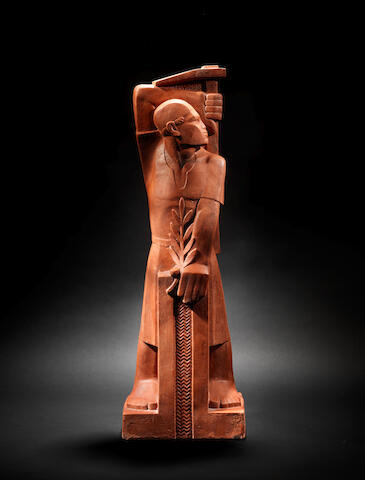
Mahmoud Moussa (Egypt, 1913-2003)
The Worker
Terracotta
Height: 100cm
Private collection
The present work is an example of Moussa's signature "Pharonic Revival" style, blending elements of ancient statuary, a turn of the century art-deco aesthetic and a distinctly social realist subject matter.
Depicting the the common "fellah" or Egyptian agricultural laborer, Moussa elevates his stature to that of a national hero, a common theme in social realist art which sought to glorify the struggle and the achievements of common citizens over those of the perceived oppressive elite.
This specific work was conceived as a tribute to the workers who perished during the construction of the Suez Canal; it is reported that up to 120,000 workers were lost during the construction between 1856 and 1869 under forced labour conditions.
Mahmoud Moussa (Egypt, 1913-2003) is generally regarded as the artistic successor to the great Mahmoud Mokhtar. He was a pioneering artist of the second generation, beginning his artistic career when, in 1931, he joined evening classes run by the Amateurs Society, then under the direction of Mahmoud Said, and received further training from Mahmoud Mokhtar, which contributed to the development of the signature Pharonic revival style which is the hallmark of some of the most celebrated examples of twentieth century Egyptian sculpture.
Moussa's artistic skill and aesthetic sensibilities came from his experience with sculpting marble gravestones, demonstrated in his ability to work on a shallow surface, and his deftness in imbuing his figures with a unique expressiveness, grace and austerity evident in the president composition.
He became a member of the teaching staff at the sculpture department of the Faculty of Fine Arts in Alexandria, in 1957. He participated in several group exhibitions in Cairo and Alexandria including several appearances at the Alexandria Biennale, including winning the prize for sculpture in Alexandria Biennale in 1955. More on Mahmoud Moussa

Mahmoud Moussa (Egypt, 1913-2003)
The Family, c. 1975
Marble
80 x 38cm (31 1/2 x 14 15/16in)
Private collection
Carved out of a monolithic block of Egyptian marble, and exhibiting the majesty, mystique and visual grandeur of ancient Pharonic statuary, "The Family" is a fitting testament to a sculptural legacy which stretches back over five thousand years.
The child holds in his hands a dove: both an ancient and modern symbol of peace and purity. The first civilization to use the motif of a Dove were the ancient Egyptians, and above its many other qualities, this animal was considered by them extremely pure, so much so that if there was a pestilence poisoning humans, it was thought that the only ones immune were those who ate nothing but doves. Through his subject matter, Moussa reminds us that "The Family" is a concept so universal and fundamental to our being, that it remains relevant between cultures that are separated by a gulf of several millennia. More on this Sculpture
Mahmoud Moussa (Egypt, 1913-2003)
The Family II, c. 1981
Black marble
Height: 51 cm
Private collection
Hamed Owais (Egypt, 1919-2011)
The Harvest (Al-Hasadh), c. 2009
Oil on canvas, framed
40 x 54cm (15 3/4 x 21 1/4in)
Private collection
Oil on canvas by Hamed Owais, one of the pioneers of Egyptian Modernism, and perhaps the sole exponent of social realism in twentieth century Egyptian Art.
Hamed Owais (Egypt, 1919-2011) was born into a peasant family in the small village of Kafr Mansour in the governorate of Beni Soueif. There, he received his primary and secondary education before working as a metalworker. He soon realized he was not fit for this profession and moved to Cairo, where he joined the School of Fine Arts. After he graduated in 1944, he pursued his studies at the Institute of Art Education in Cairo, where he was trained by the pedagogue and critic Youssef el-Afifi. He received his diploma in 1946 and in the following year, he founded the Group of Modern Art, together with other artists of his generation, such as Gamal el-Sigini, Gazbia Sirry, Zeinab Abdel Hamid, Salah Yousri and Youssef Sida.
From 1948 to 1955, Owais worked as a drawing teacher in the Farouk Ist Secondary School in Alexandria. He traveled to Italy in 1952 and visited the Venice Biennale where the works of Italian Social Realist artists were being exhibited. In 1958, he was appointed a professor at the Faculty of Fine Arts in Alexandria just after it was founded by the sculptor Ahmad Osman (1907 - 1970). In 1967, Owais received a scholarship to continue his studies at the Royal Academy of Fine Arts of San Fernando in Madrid where he received his diploma in 1969. From 1977 to 1979, he served as the head of the Faculty of Fine Arts in Alexandria. He died in Cairo in 2011, at the age of ninety-two. More on Hamed Owais
Ahmed Sabry (Egypt, 1889-1995)
Nude on the Beach, c. 1950
Oil on canvas
40 x 60cm (15 3/4 x 23 5/8in)
Private collection
Ahmed Sabry (Egypt, 1889-1995), Born in the Megharbeleen neighborhood of Cairo's Darb el-Ahmar district, Sabry suffered from a tormented upbringing, moving house frequently after being orphaned at an early age. In 1911, he joined the Fine Arts School and was sent to Paris in 1919 where he joined the Grande Chaumiere Academie, then the Academie Julienne.
When he returned to Egypt, he worked as an illustrator with the Entomology Department of the Ministry of Agriculture, then as an artist with the Ministry of Public Works, which sent him on a further scholarship to Paris; there, he exhibited his painting "The Nun" in the Grand Palais in 1929, and was awarded the Prix d'Honneur by the French Arts Society. Upon his return to Cairo in 1929, he took up work as a teacher at the Higher School for Fine Arts until 1951.
Sabry was a renowned teacher and fostered the talents of numerous Egyptian masters such as Hussein Bicar, Salah Taher, and Hamed Owais. Sabry is considered a pioneer of classic easel portraiture, and his portraits are considered some of the most technically exquisite and stylistically elegant examples of Egyptian portrait painting. More on Ahmed Sabry
.jpg)
Ahmed Sabry (Egyptian, 1889-1955)
Portrait of a young woman, seated, three quarter length, in a brown dress, c. 1927
Oil on canvas
115 by 85cm
Private collection
Ahmed Sabry (Egypt, 1889-1995)
Meditation or The Nun (c. 1929)
Oil on canvas
The Egyptian Museum Of Fine Arts
For years, the family of painter Ahmed Sabry and the management of Cairo’s Egyptian Museum of Modern Art (EMMA) have been assuming the loss or theft of Sabry’s masterpiece The Nun (1929), or as originally titled, Meditations. Because of the archaic, if not absent, loan tracking system at the museum and the lack of communication between ministries, The Nun’s location was a mystery. It is now confirmed that Sabry’s painting hangs at the residence of the permanent representative of the Egyptian mission to the United States in New York. More on this painting
Georges Hanna Sabbagh (Egypt, 1877-1951)
Banyan Tree, c. 1938
Oil on canvas, framed
60 x 73cm (23 5/8 x 28 3/4in)
Private collection
"Banyan Tree" is one of Sabbagh's most refined and technically accomplished compositions. Enigmatic and mysterious, the Banyan Tree is a seminal symbol in Asian and ancient Egyptian Religion. The Banyan or "Ficus benghalensis" is a which tree starts by wrapping itself around a host tree before plunging roots into the ground; sprawling, cavernous and complex the Banyan is a striking and captivating force of nature. More on this painting
Georges Hanna Sabbagh (1877–1951) was an Egyptian-born French artist, born at Alexandria to a Catholic family of Lebanese origin. He studied art in Paris, being the first Egyptian at the Louvre School. He was a pupil of Paul Sérusier, Félix Vallotton and the Symbolist painter Maurice Denis, and worked beside Amedeo Modigliani. His family and the region of Brittany provided him with subjects for many of his paintings, before trips to Egypt led him to rediscover the lights, landscapes and characters of his childhood. He excelled in portraits, nudes and landscapes both in France and in Egypt. A painter of talent, Georges Sabbagh forms one of the group of artists who Jean Cassou called "the sacrificed generation", absorbing the school of Les Nabis, Fauvism and Cubism at the beginning of the century, but forgotten after the Second World War.
More on Georges Hanna Sabbagh
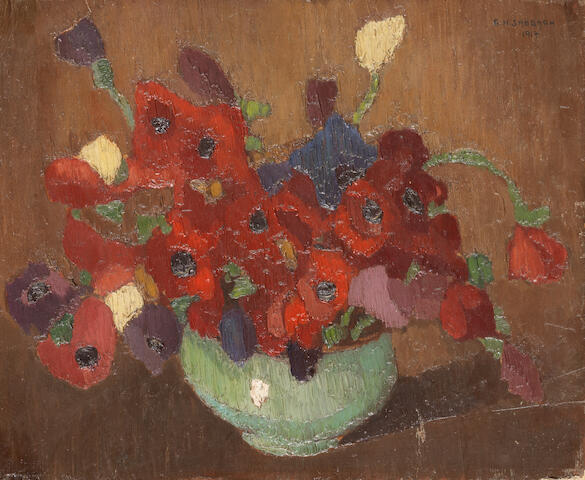
Georges Hanna Sabbagh (Egypt, 1877-1951)
Still Life, c. 1917
Oil on boar
33 x 41cm (13 x 16 1/8in)
Private collection
Hussein Bicar (Egypt, 1913-2002)
Fellaha in Aswan, c. 1980
Oil on board
43 x 54cm (16 15/16 x 21 1/4in)
Private collection
Fellah or fallāḥa is a peasant, usually a farmer or agricultural laborer in the Middle East and North Africa. The word derives from the Arabic word for "ploughman" or "tiller".
Due to a continuity in beliefs and lifestyle with that of the Ancient Egyptians, the fellahin of Egypt have been described as the "true Egyptians".
Hussein Amin Bicar (2 January 1913 in Alexandria – 16 November 2003) was one of Egypt’s most prominent artists of the 20th century, after graduating from the Cairo higher school of fine arts in 1934, he spent more than 60 years of his life teaching art at schools and universities and then through the press, he is credited for initiating a style of journalistic art that elevated illustrating for news papers to a level close to that of the fine art, he is known for his simple and clear style reflecting the influence of Pharaonic art with its harmony, serenity and mystic. Bicar’s journalistic contributions go beyond illustrations to include art criticism and narrative poetry. Being the first Egyptian artist to illustrate Arabic children’s books, Bicar has played a major role in establishing and promoting this field.
Furthermore, his portraits and oil paintings depicting graceful Egyptian peasants, Nubian scenes, Alexandria and Pharaonic themes as well as his elegant, gracious nature has earned him great recognition and honors. In the words of late journalist Mustafa Amin:"he is not a single artist, he is a master of several arts…he is a painter, photographer, poet, musician and philosopher".

Hussein Bicar from
"The Eighth Wonder" c. 1971
Kafr El-Gouna Museum
Amongst the works of Bicar is the set of paintings done for "The Eighth Wonder", a documentary narrating the tale of Ramses II Temple in Abu Simbel in southern Egypt. While the construction of The Aswan Dam, begun in 1960, to stabilize the water supply of Egypt, the flooding which would result threatened the existence of irreplaceable ancient temples.
Bicar was asked to depict in paintings the early stages of constructing the temple. This included the opening ceremony for Abu Simbel—a ceremony attended by Ramses II and his lovely wife, Nefertari—“the prettiest of the pretty.” Ramses II had built several temples including one for Nefertari constructed next to one of his own. More on The Eighth Wonder  Hussein Bicar from
Hussein Bicar from
"The Eighth Wonder" 1971
Kafr El-Gouna Museum
Hussein Bicar (Egypt, 1913-2002)
Nubian Woman and Goat, 1995
Oil on canvas
29 x 49cm (11 7/16 x 19 5/16in)
Private collection
Nubians are an ethno-linguistic group of people who are indigenous to the region which is now northern Sudan and southern Egypt. They originate from the early inhabitants of the central Nile valley, believed to be one of the earliest cradles of civilization. More on the Nubians
Hassan el Glaoui (Morocco, born 1924)
Horses
Oil on board, framed
76 x 105cm (29 15/16 x 41 5/16in)
Private collection
Hassan el Glaoui (Morocco, born 1924); Despite opposition from his father, a powerful pasha named Thami, El Glaoui began painting in his teens and, following art education in France, he held his first show in 1952 in Paris. He then returned to Morocco in 1965, concentrating on painting horses.
El Glaoui regards his work as a “living mirror of the past and the traditions which are still the essence of the Moroccan spirit”. “My love of my country has been the defining spirit of my painting. I have recorded our ancestral roots, the flowers in the Valley of the Kasbah and the red Cherifian palaces, the royal courteges with their long lines of white burnouses and the mounted cavalry and their horses,” El Glaoui said in an interview carried by Yacout in 2009. More on Hassan el Glaoui
Hassan el Glaoui (Morocco, born 1924)
FANTASIA BLEUE
Gouache on paper
48.5 x 63.5 cm; 19 by 25 in
Private collection
HASSAN EL GLAOUI, Moroccan, 1924-2018
FANTASIA HORSEMEN
Gouache on card adhered to board
75 by 105.5cm., 29½ by 41½in.
Private collection
The present lot once belonged to Hubert de Givenchy (1927-2018), a close personal friend of the artist and his model wife, Christine Legendre, who had walked for the celebrated designer in the 1950s. Hassan El Glaoui’s works have been exhibited extensively across the globe. His works are included in numerous prestigious collections such as the Royal Palace Collection in Fez and the Parliament Collection in Rabat. In April 2019, an exhibition of El Glaoui’s work, produced during his years in Paris, opened at the Mohammed VI Museum of Modern and Contemporary Art, Rabat. Throughout his long career, Hassan El Glaoui received international praise and is widely celebrated as one of Morocco’s most revered artists and a pioneer of contemporary art. More on this painting
Hassan El Glaoui, Moroccan, 1923-2018
Untitled (Cavalcade De Chevaux En Liberté)
Gouache on board
74.8 by 106.5cm., 29½ by 42in.
Private collection
Nazir Khalil (Egypt, 1916-2001)
View of Cairo
Oil on canvas
50 x 60cm (19 11/16 x 23 5/8in)
Private collection
Estimated for £3,000 - £5,000 in June 2018
I have no information on this artist!
Hamed Nada (Egypt, 1924-1990)
Untitled, circa 1960's
Oil on canvas, framed
64 x 45cm (25 3/16 x 17 11/16in).
Private collection
Hamed Nada (Egypt, 1924-1990). The son of a religious sheikh, Hamed Nada was brought up in an old Arabic house in the poor traditional neighbourhood of Al-Khalifa near the Syeda Skina Mosque in Cairo. Around him the young Nada experienced all the life and vibrancy of the old city, rich in crumbling medieval Mamluk buildings and gracious Ottoman-era monuments.
From the mid-1950s onwards Hamed Nada's style underwent major changes. He began to look at the work of Ragheb Ayad, from the first generation of Egyptian pioneer artists, who had reinterpreted pharaonic art in his portrayals of ordinary Egyptians. Also for inspiration Nada looked to Nubian folk art and African primitive art. This helps to explain Nada's comments about the effects of Ayad's art on his:
Nada started to use bright resonant colours, and the previous heaviness of his compositions evaporated. The figures, both human and animal, elongated and stylized, began to float around the pictorial space. Michievious and vivacious, the figures seemed to take on a life of their own. Thus Africanized, the figures in Nada's paintings became akin to hieroglyphs, generalized symbols rather than particularized personages. As Nada suffered gradual loss of hearing in the 1980s, to compensate the colours, gestures and violent movements of the figures became ever more extreme, leaving one with the impression of almost being able to hear the commotion going on in his paintings. More on Hamed Nada

Hamed Nada (Egyptian 1924 - 1990)
Henna Eve, c. 1988
Oil and pencil on canvas laid down on panel
47 x 43¼in. (120 x 110cm.)
Private collection
Marguerite Nakhla (Egypt, 1908-1977)
View of Paris, c. 1948
Oil on canvas, framed
60 x 80cm (23 5/8 x 31 1/2in).
Private collection
Margaret Nakhla was a modern Egyptian painter (1908–1977); born in Alexandria, studied art in France specialising in oil painting. She received her teaching Diploma in 1939, then studied the art of wall painting at the École du Louvre in 1951. She taught at the Institute of Fine Arts for Girls, Egypt. She lived in Alexandria, Paris, Cairo and Port Said. More on Margaret Nakhla
Marguerite Nakhla (Egypt, 1908-1977)
Waterfront of Alexandria, in front of the Cecil Hotel
Oil on canvas, framed
21 X 28 X .3 in.
Private collection
Sold: for $3,000 USD in Nov 2023
Tahia Halim (Egypt, 1919-2003)
Ella Al-Souq Fi Al-Nuba (to the market place in Nubia), c. 196's
Oil on board, framed
50 x 50cm (19 11/16 x 19 11/16in).
Private collection
Sold for £22,500 in Oct 2015
Tahia Halim (Egypt, 1919-2003) was an Egyptian painter. Tahia Halim is one of the pioneers of the Modern Expressive Movement in Egyptian Art in the 1960s, where she excelled in expressing the Egyptian character’s idiosyncrasies in her works. She has many works concerning the Nile, boats and the popular and national subjects for which she has been granted several honorary awards in Egypt and abroad.
Tahia studied art under important drawing teachers as the Lebanese painter Yussef Trabelsi and the Greek artist Gerom; then under the Egyptian artist Hamed Abdullah at his studio 1943, and after their marriage, in 1945, they left for Paris to join Julian Academy (1949-1951). Returning to Egypt, they taught together art in their private studio, in Down Town (near Tahrir Square) in Cairo. Tahia Halim received two devotion scholarships of Art Production in 1960 and in 1975. More on Tahia Halim
Tahia Halim (Egyptian, 1919-2003)
Farhat Al Nuba (The Happiness of Nubia), c. 1965
Oil and gold leaf on canvas
51 1/8 x 99in. (130 x 251.5cm.)
Private collection
Inji Efflatoun (Egypt, 1924-1984)
Boats on the Nile
oil on board
signed and dated "84" (lower left), executed in 1984
32 x 58cm (12 5/8 x 22 13/16in).
Inji Aflatoun (1924–1989) was an Egyptian painter and activist in the women's movement. She was a "leading spokesman for the Marxist-progressive-nationalist-feminist spokeswoman in the late 1940s and 1950s", as well as a "pioneer of modern Egyptian art" and "one of the important Egyptian visual artists"
During school, Aflatoun liked to paint and her parents encouraged her. Her private art tutor, Kamel al-Timisani, a leader in an Egyptian Surrealist collective called the Art and Freedom Group, introduced her to surrealist and cubist aesthetics. Her paintings of that period are influenced by surrealism. She later recalled that people were astonished by her paintings and wondered "why a girl from a rich family was so tormented". She stopped painting from 1946 to 1948, considering that what she was painting no longer corresponded to her feelings. Her interest was later renewed after visiting Luxor, Nubia, and the Egyptian oases. During these trips, she had the opportunity to "penetrate the houses and sketch men and women at work". She studied for a year with the Egyptian-born Swiss artist Margo Veillon During this period, she made individual exhibits in Cairo and Alexandria and showed at the Venice Biennale in 1952 and the São Paulo Art Biennial in 1956. In 1956 she became friends with and was later influenced by the Mexican painter David Alfaro Siqueiros.
She was arrested and secretly imprisoned during Nasser's roundup of communists in 1959. After her release in 1963, Egypt's Communist party having been dissolved, she devoted most of her time to painting. She later declared: "Nasser, although he put me in prison, was a good patriot."She was able to continue painting during her imprisonment. Her early prison paintings are portraits, while the later are landscapes. In the years after her liberation, she exhibited in Rome and Paris in 1967, Dresden, East Berlin, Warsaw and Moscow in 1970, Sofia in 1974, Prague in 1975, New Delhi in 1979. Her paintings are filled with "lively brushstrokes of intense color" reminding some observers of Van Gogh or Bonnard. Her art of later years is characterised by an increasing use of large white spaces around her forms. A collection of her works is displayed at the Amir Taz Palace in Cairo. More on Inji Aflatoun.
More on Inji Aflatoun

Inji Efflatoun (Egypt, 1924-1984)
In the Woman’s Prison, c. 1960
"from the period of the prison"
Oil on wood
58x52 Cm
Private collection
Shirin Neshat (Iran, born 1957)
The Last Words, c. 2003
Cibachrome print
40 x 76cm (15 3/4 x 29 15/16in).
Private collection
Shirin Neshat (Iran, born 1957)
Fervor Series Couple at Intersection, from Fervor series, 2000
Three-part gelatin silver prints, each signed, titled, dated and numbered 7/10 in pencil on the verso of each.
17 7/8 x 22 1/4 each
Private collection
Shirin Neshat (born March 26, 1957) is an Iranian visual artist who lives in New York City. She is known primarily for her work in film, video and photography She is the fourth of five children of wealthy parents, brought up in the religious town of Qazvin in north-western Iran. Neshat's father was a physician and her mother a homemaker. Neshat said that her father, "fantasized about the west, romanticized the west, and slowly rejected all of his own values; both my parents did. What happened, I think, was that their identity slowly dissolved, they exchanged it for comfort. It served their class”. As a part of Neshat’s “Westernization” she was enrolled in a Catholic boarding school in Tehran. Through her father’s acceptance of Western ideologies came an acceptance of a form of western feminism. Neshat’s father encouraged each of his daughters to “be an individual, to take risks, to learn, to see the world", and he sent his daughters as well as his sons to college to receive their higher education.[4] Through her grandparents, her mother's parents, Neshat learned traditional religious values. More on Shirin Neshat
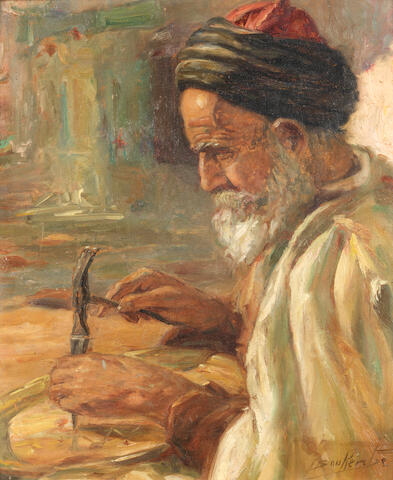
Miloud Boukerche (Algeria, 1908-1978)
Portrait of an Arab Man
Oil on board, framed
21 x 26cm (8 1/4 x 10 1/4in).
Private collection
Miloud Boukerche is an Algerian painter born onApril 13 , 1908in the district of Sidi-Yacine, in Sidi-Bel-Abbès 1 , in Algeria , and he died in Vaucresson on April 13, 1978 at age 70.
He is one of the precursors of Algerian painting with Ahmed Benslimane (1916-1951), Abdelhalim Hemche (1906-1978), Azouaou Mammeri (1886-1954) and Mohammed Zmirli (1919-1984). He will indeed be one of the first Algerians to discover the so-called easel painting.
More on Miloud Boukerche
Please visit my other blogs: Art Collector, Mythology, Marine Art, Portrait of a Lady, The Orientalist, Art of the Nude and The Canals of Venice, Middle East Artists, 365 Saints, 365 Days,
and Biblical Icons,
also visit my Boards on Pinterest and deviantart
Images are copyright of their respective owners, assignees or others.
Some Images may be subject to copyright
I don't own any of these images - credit is always given when due unless
it is unknown to me. if I post your images without your permission, please tell
me.
I do not sell art, art prints, framed posters or reproductions. Ads are
shown only to compensate the hosting expenses.
If you enjoyed this post, please share with friends and family.
Thank you for visiting my blog and also for liking its posts and pages.
Please note that the content of this post primarily consists of articles
available from Wikipedia or other free sources online.
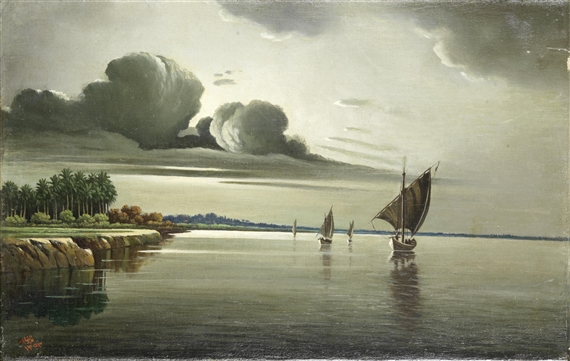
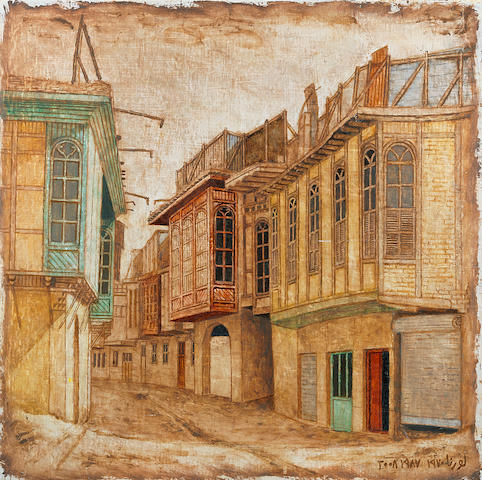
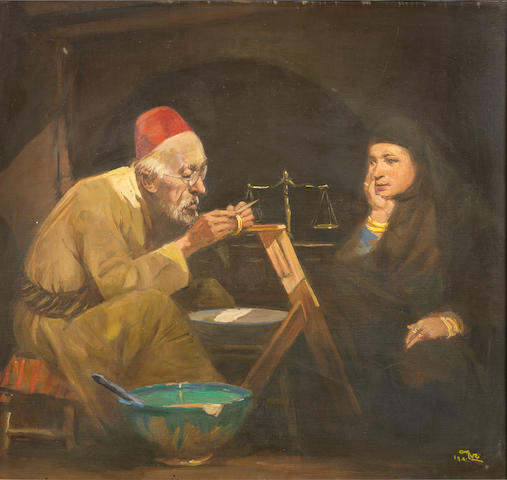
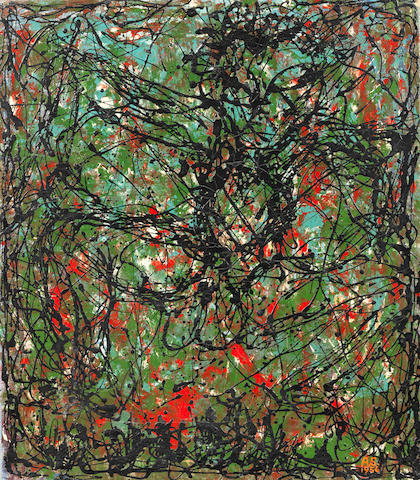
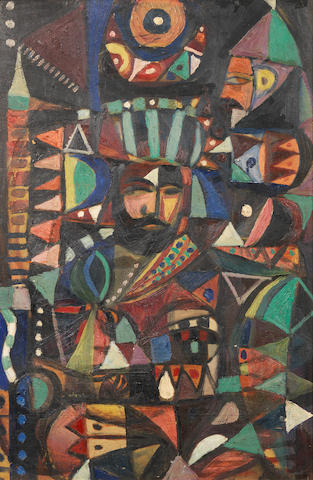

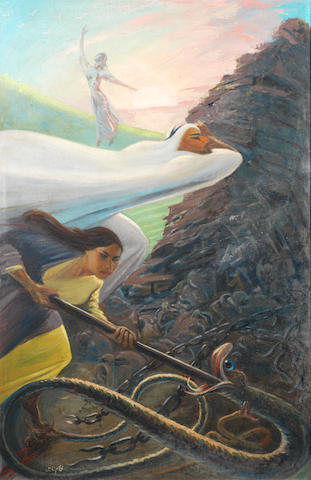


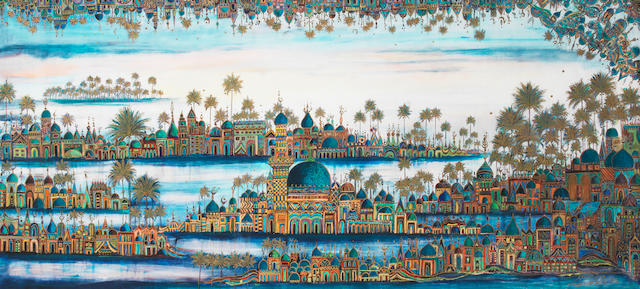


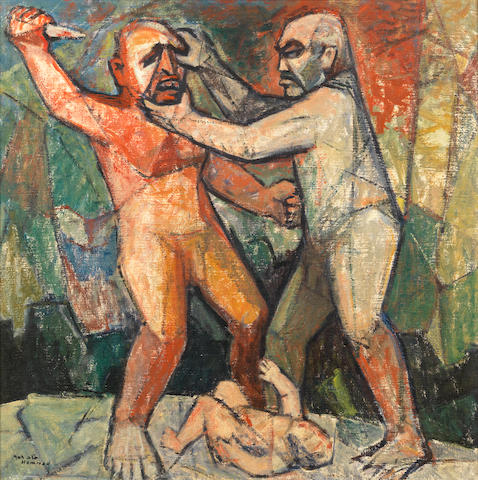
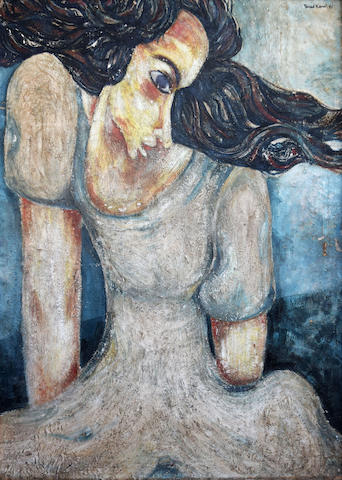



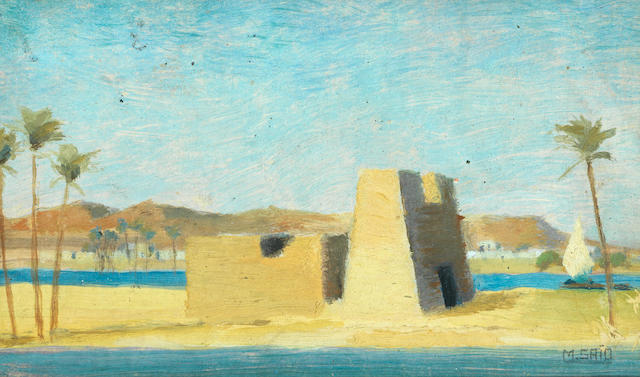

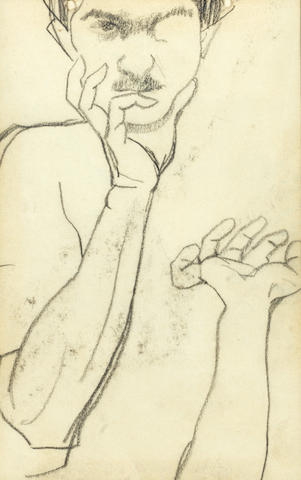

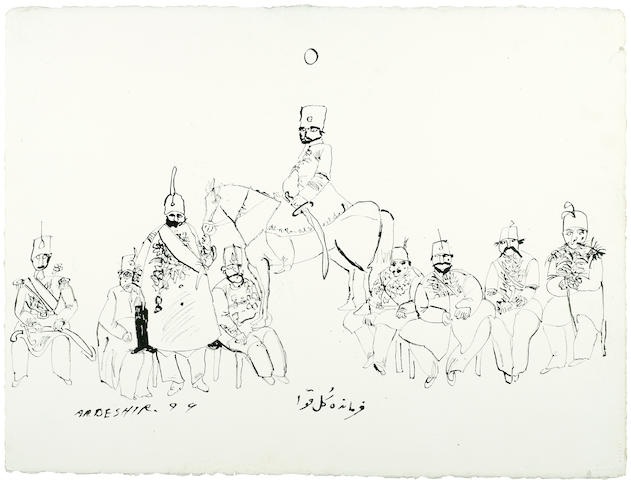


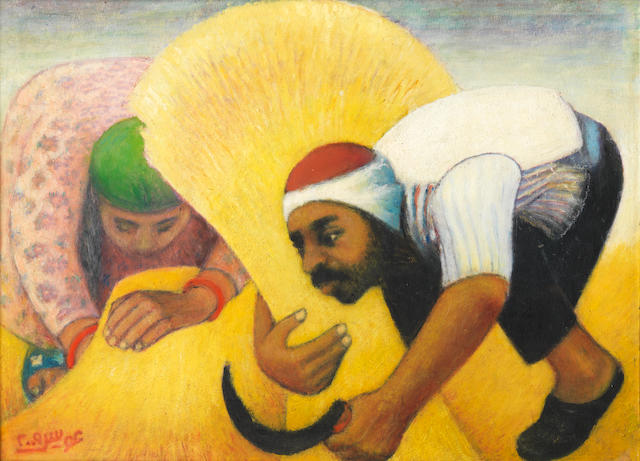
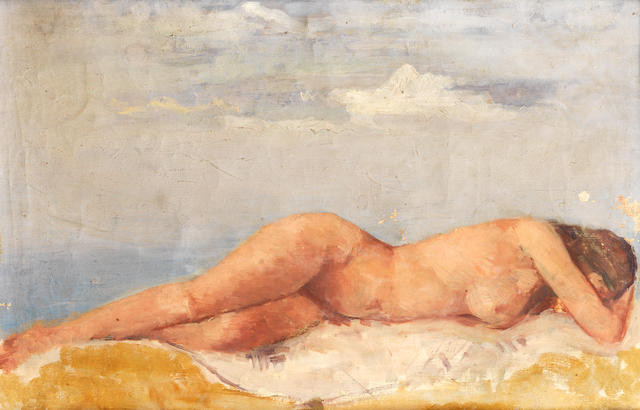
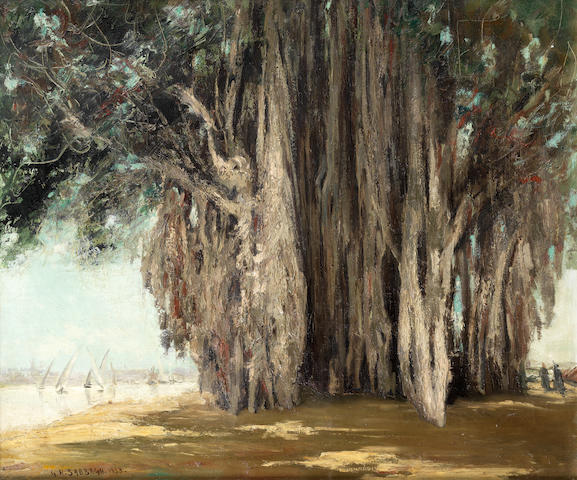

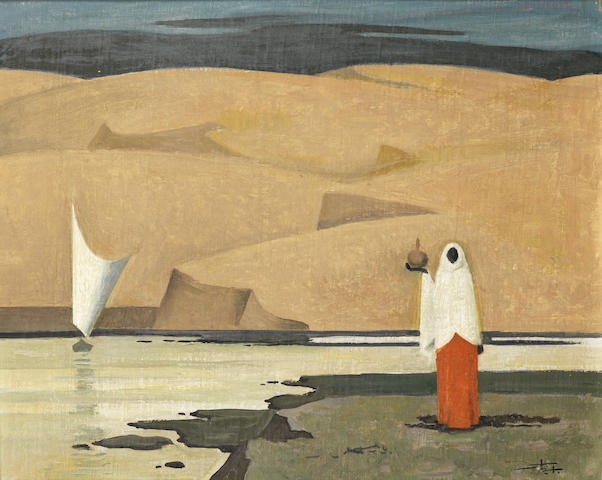
 Hussein Bicar from
Hussein Bicar from 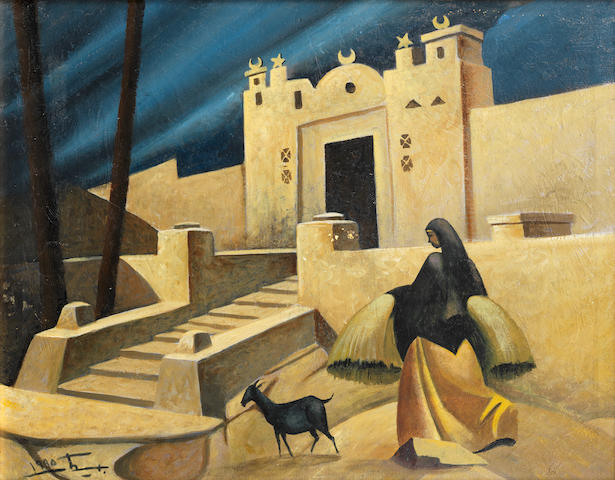


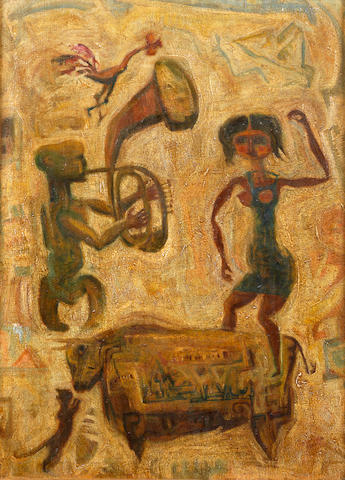
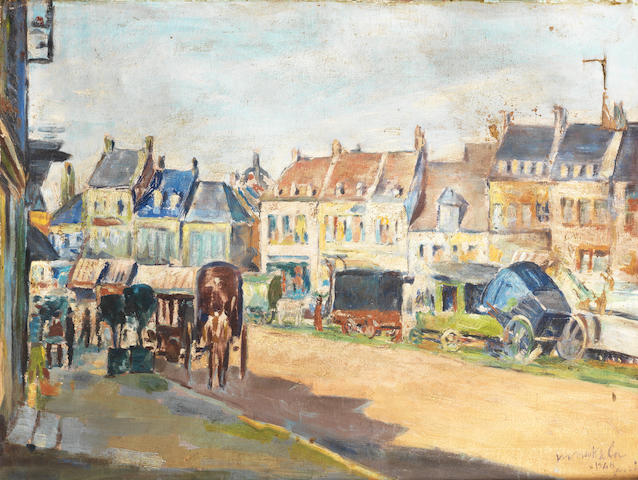
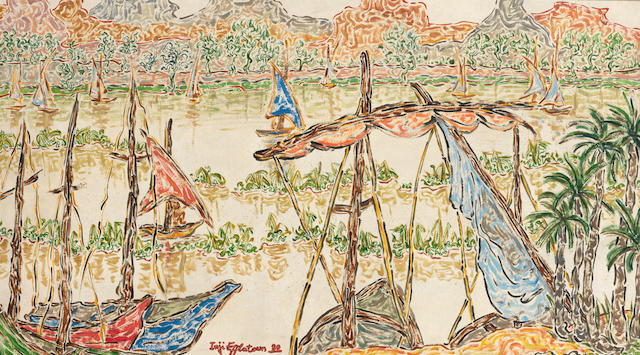










.jpg)



.jpeg)
.jpeg)

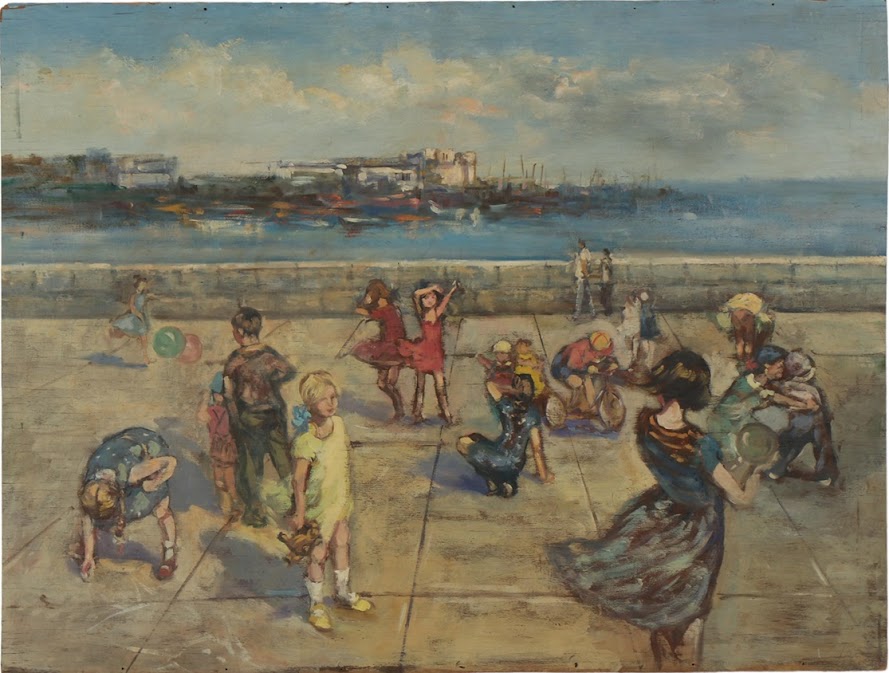



No comments:
Post a Comment